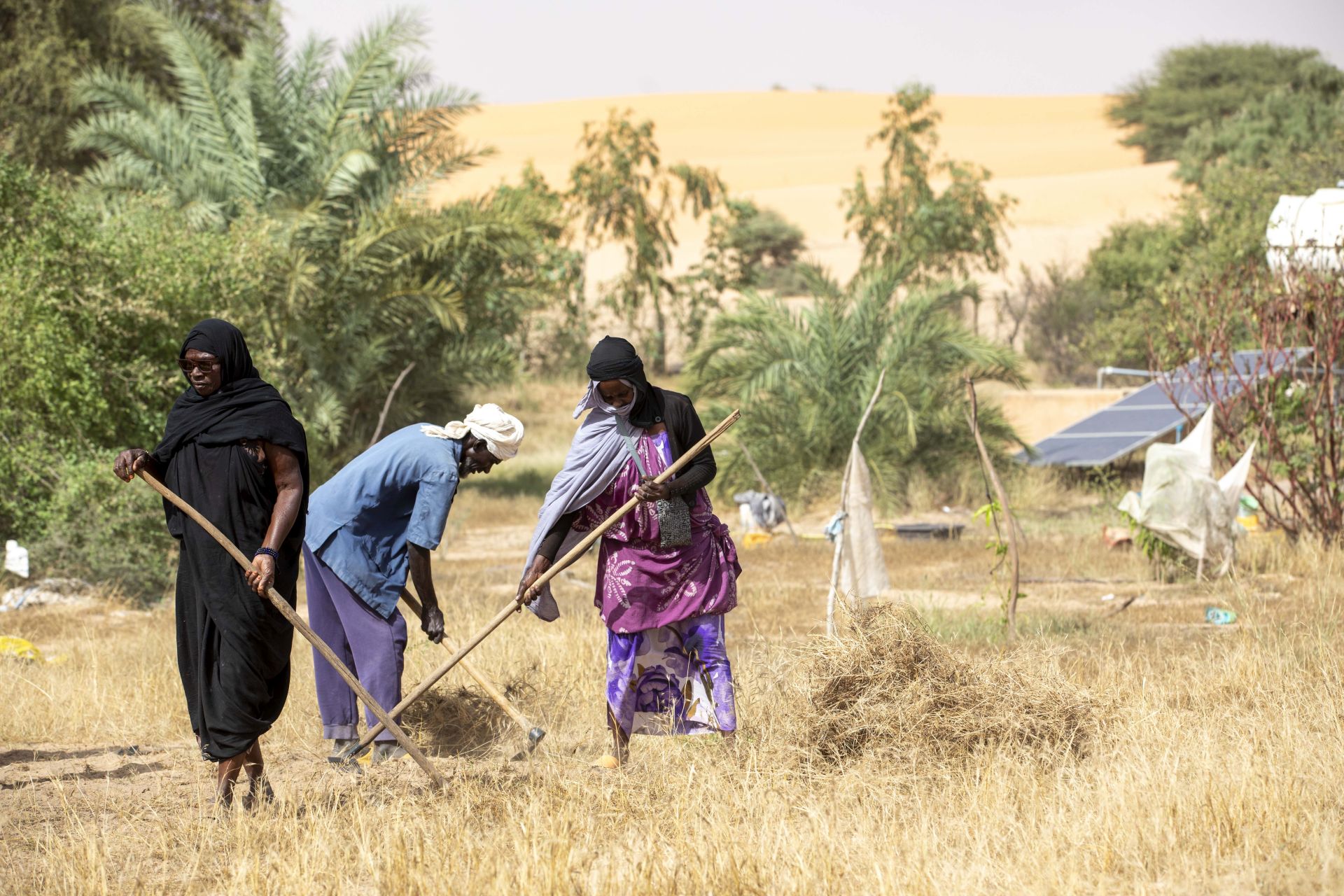FAO Assistant Director- General
Land restoration in focus: NENA's agenda for Desertification and Drought Day

Desertification and Drought Day 2025 is a timely reminder of the urgent need to restore our land and rethink how we manage natural resources. With this year’s theme, “Restore the Land. Unlock the Opportunities,” countries around the world are highlighting the benefits of land restoration. In the Near East and North Africa (NENA), where land and water are already under intense pressure, the message carries both urgency and opportunity.
From crisis to opportunity
NENA is one of the most water- and land-scarce regions on the planet. For decades, it has battled desertification, drought, and the devastating knock-on effects they cause, such as food insecurity, biodiversity loss, forced migration, and more. However, alongside these challenges, there are promising actions, innovations, and opportunities underway.
This Desertification and Drought Day (DDD), as global leaders gather in Bogotá, Colombia, to highlight the huge potential of land restoration, NENA is stepping forward with a bold new investment vision. Supported by extensive research and regional collaboration, the Food and Agriculture Organization of the United Nations (FAO) and its partners are ready to launch a white paper that reframes land restoration not as a cost, but as a smart, forward-looking investment.
What’s at stake?
Globally, more than half of our GDP depends on nature. Yet every year, we’re losing healthy land at an alarming rate, an area the size of Egypt becomes degraded annually. If nothing changes, we will need to restore 1.5 billion hectares by 2030 just to stay on track toward a land-degradation neutral world.
This a daunting number, but with it comes a massive opportunity: the chance to jumpstart a trillion-dollar land restoration economy, create decent land-based jobs, protect livelihoods, and build a more resilient future.
Yet today, we’re far from that goal. Annual investments in land restoration currently sit at around USD 66 billion, when we need more than USD 1 billion per day to truly turn the
tide. The private sector contributes just 6 percent of that amount. So, how do we close the gap?
A new vision for land, people, and prosperity
This is why FAO, in collaboration with the United Nations Convention to Combat Desertification (UNCCD), United Nations Environment Programme (UNEP), United Nations Economic and Social Commission for Western Asia (ESCWA), and the League of Arab States, has developed the upcoming white paper: “Reimagining sustainable returns on investment for planet and people: A Near East and North Africa regional approach to ecosystem restoration and development solutions.”
This white paper lays out a compelling business case for ecosystem restoration across the region. It shows that land restoration can drive economic growth, improve lives, and strengthen resilience against climate and shocks.
At the heart of this effort is a regional land investment framework, a practical tool to align policy, financing, and innovation across borders. It is designed to move us from small, fragmented projects to scalable, system-wide change.
Why now?
Because the urgency is clear, and so is the opportunity for action.
At COP16 in Riyadh, more than USD 12 billion was pledged to support land restoration and drought resilience, with significant backing from the Arab Coordination Group and international development banks. Land restoration is now receiving the attention it deserves, not only from environmental stakeholders but also from policymakers and financial institutions.
This shift goes beyond public investment. As part of the COP16 outcomes, Parties agreed to scale up private sector engagement through initiatives like Business4Land (B4L), a new global effort to align business investment with land restoration goals. FAO’s white paper contributes to this growing momentum, demonstrating that restoring land is not only essential for ecosystems, but also a sound and strategic investment for businesses.
Looking ahead
By the end of 2025, FAO and its partners aim to have a costed programme and a portfolio of pilot projects ready to go. From September onward, the focus will shift to implementation, turning vision into results, one restored hectare at a time.
To build on this, FAO is organizing an Investors Day in October in Saudi Arabia to bring together development partners, businesses, and governments to unlock even more opportunities under the regional framework.
Desertification and Drought Day: A moment to act
DDD 2025 is a chance to reset the conversation. To move from awareness to action. From talk to transformation. As UNCCD Executive Secretary Ibrahim Thiaw said: “A restored land is a land of endless opportunities. It’s time to unlock them now.”
NENA is answering that call. Not by working alone, but through partnerships, policy shifts, and a new kind of investment thinking, one that puts land at the centre of sustainable development.
So, as we mark Desertification and Drought Day this year, let’s remember: every restored hectare of land is a step toward a more stable, prosperous future. The tools are here. The partnerships are forming. The time is now.
.jpg?sfvrsn=fa3858de_3)
Abdulhakim Elwaer
Abdulhakim Elwaer is Assistant Director-General and Regional Representative for the Near East and North Africa for the Food and Agriculture Organization of the United Nations.
